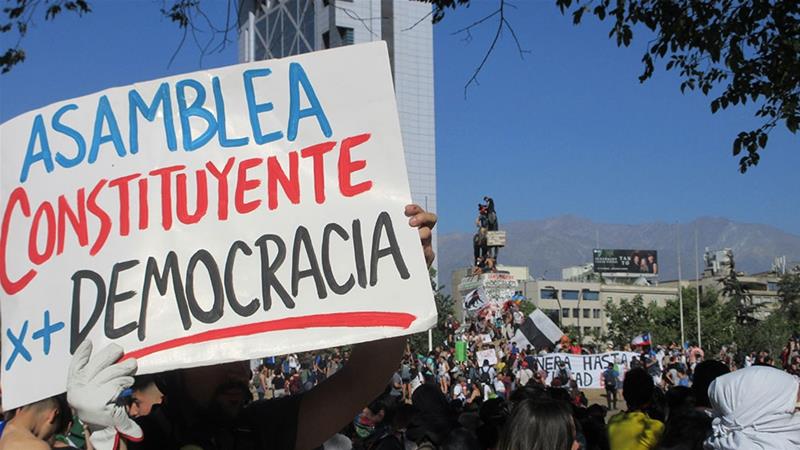(image source: Aljazeera)
Abstract:
Comparative constitutional change has recently emerged as a distinct field in the study of constitutional law. It is the study of the way constitutions change through formal and informal mechanisms, including amendment, replacement, total and partial revision, adaptation, interpretation, disuse, and revolution. The shift of focus from constitution-making to constitutional change makes sense, since amendment power is the means used to refurbish constitutions in established democracies, enhance their adaptation capacity and boost their efficacy. Adversely, constitutional change is also the basic apparatus used to orchestrate constitutional backslide as the erosion of liberal democracies and democratic regression is increasingly affected through legal channels of constitutional change. The Routledge Handbook of Comparative Constitutional Change provides a comprehensive reference tool for all those working in the field and a thorough landscape of all theoretical and practical aspects of the topic. Coherence from this aspect does not suggest a common view, as the chapters address different topics, but reinforces the establishment of Comparative Constitutional Change as a distinct field. The book brings together the most respected scholars working in the field, and presents a genuine contribution to comparative constitutional studies, comparative public law, political science and constitutional history.Table of contents:
1. Xenophon Contiades & Alkmene Fotiadou - Comparative Constitutional Change: A New Academic Field;(more information with the publisher)
Part I The study of comparative constitutional change: theoretical and methodological aspects;2. Jaakko Husa - Comparative methodology and constitutional change;
3. Oran Doyle - Order from chaos? Typologies and models of constitutional change;
4. Tom Ginsburg - Constitutional endurance;
5. David Law & Ryan Whalen - Constitutional amendment versus constitutional replacement: An empirical comparison;
6. Mark Tushnet - Varieties of liberal constitutionalism;
Part II Formal constitutional change;7. Richard Albert - Formal amendment rules: Functions and design;
8. Manfred Stelzer - Constitutional design through amendment;
9. Yaniv Roznai - The uses and abuses of constitutional unamendability;
10. Nathalie Behnke & Arthur Benz - Federalism and constitutional change;
11. Eoin Carolan - Participatory constitutional change: constitutional referendums;
Part III Informal constitutional change;12. David Feldman - Political practice and constitutional change;
13. Joel I. Colón-Ríos - Judge-made constitutional change;
14. Helle Krunke - Global values, international organizations and constitutional change;
15. Giacomo Delledonne - Crises, emergencies and constitutional change;
16. Marco Goldoni & Olcay Tarik - The material study of constitutional change;
Part IV Contemporary challenges in the theory and practice of comparative constitutional change;17. Chris Thornhill - Constituent power and european constitutionalism;
18. Paul Blokker - Populism and constitutional change;
19. Tomasz Tadeusz Koncewicz - The democratic backsliding in the European Union and the challenge of constitutional design;
20. Zoran Oklopcic - Constitution and self-determination;
21. Silvia Suteu - Gender in comparative constitutional change;
Part V Case studies. Distinct profiles of constitutional change;22. Robert Blackburn - The future of UK constitutional law;
23. Elisa Arcioni & Adrienne Stone - Constitutional change in Australia: The paradox of the frozen continent;
24. Juliano Zaiden Benvindo - Preservationist constitutional change in Latin America: The cases of Chile and Brazil;
25. James Fowkes - Informal constitutional change in unlikely places: The case of South Africa;
26. Yasuo Hasebe - Constitutional changes in Japan;


No comments:
Post a Comment